Introduction to South American Cultural Heritage
South America’s cultural heritage is a rich mosaic woven by indigenous, European, African, and Asian influences over centuries. Each country in this diverse continent offers unique cultural experiences that reflect their distinct historical journeys, languages, and traditions. Understanding the cultural heritage of South America involves exploring a variety of dimensions including art, architecture, festivals, languages, and the deep-rooted traditions of its indigenous peoples.
Indigenous Influences
Indigenous cultures form the cornerstone of South American heritage. The continent is home to numerous indigenous groups such as:
- Quechua and Aymara in the Andes
- Guarani in Paraguay, Brazil, and Argentina
- Mapuche in Chile and Argentina
These groups have maintained their languages, traditions, and crafts, significantly contributing to the cultural tapestry. The archaeological sites like Machu Picchu in Peru and the Nazca Lines in southern Peru are iconic remnants of pre-Columbian civilizations.
Colonial Legacy
The Spanish and Portuguese conquests in the 15th and 16th centuries transformed South America’s cultural landscape. Colonial architecture, baroque cathedrals, and historic urban centers bear testimony to this period. Cities like Cartagena in Colombia and Salvador in Brazil showcase preserved colonial buildings, fortresses, and churches.
African Heritage
The transatlantic slave trade brought Africans who significantly impacted South America’s cultural development. Afro-Brazilian culture is particularly vibrant, manifesting in:
- Music and Dance: Samba, capoeira, and candomblé
- Cuisine: Dishes like feijoada
These elements celebrate African roots and resilience, marking important contributions to national identities.
Festivals and Traditions
South America hosts colorful festivals that are reflections of its cultural fusion. Some prominent ones include:
- Carnival in Rio de Janeiro
- Inti Raymi in Peru
- Oruro Carnival in Bolivia
These festivals often combine indigenous traditions, Christian celebrations, and modern influences, creating dynamic expressions of cultural identity.
Linguistic Diversity
Spanish and Portuguese are the dominant languages due to colonial rule. However, indigenous languages like Quechua, Guarani, and Aymara are widely spoken and officially recognized in several countries. This linguistic diversity enriches literary and oral traditions in the region.
South America’s cultural heritage provides a profound connection to humanity’s past, celebrating a confluence of traditions, histories, and innovations that continue to shape its vibrant societies.
Why Choose Cultural Tours in South America?
Choosing cultural tours in South America opens the door to an unparalleled array of historical and social experiences that resonate deeply with anyone intrigued by human diversity and legacy. Here’s why these tours are a must:
Rich Historical Tapestry
- Ancient Civilizations: South America is home to the remnants of powerful civilizations such as the Incas, Mayas, and Aztecs. Visiting Machu Picchu or the ruins of Tiwanaku unveils stories of ancient wisdom and complex societies.
- Colonial Heritage: The impact of Spanish and Portuguese colonization is palpable in cities like Cusco, Lima, and Salvador, where colonial architecture and historical artifacts chart the journey from conquest to independence.
Vibrant Cultural Practices
- Festivals and Ceremonies: South American festivals such as Brazil’s Carnival, Peru’s Inti Raymi, and Bolivia’s Oruro Carnival highlight the region’s rich cultural mosaic. These events are celebrations of music, dance, spirituality, and community.
- Traditional Crafts: Explore markets in places like Otavalo in Ecuador, where indigenous artisans craft exquisite textiles, pottery, and jewelry, reflecting time-honored techniques passed down through generations.
Diverse Ethnic Groups
- Indigenous Communities: Interactions with indigenous groups, such as the Quechua in the Andes or the Mapuche in Chile, provide insights into unique living traditions, languages, and worldviews that survive amidst modernity.
- Afro-Latin Influence: Regions like Colombia’s Pacific coast or Brazil’s Bahia state celebrate Afro-Latin heritage through vibrant dance, music, and culinary traditions that date back to the African diaspora’s early days.
Stunning Landscapes
- Amazon Rainforest: Cultural tours often include exploration of the Amazon, where the symbiotic relationship between people and nature is evident. Indigenous guides reveal secrets of the forest that sustain their livelihoods.
- Andean Highlands: The Andean region provides a dramatic backdrop to cultural experiences like traditional farming methods, weaving techniques, and local cuisine.
Authentic Gastronomic Experiences
- Local Cuisine: South America’s gastronomic scene boasts a fusion of indigenous, African, and European influences. Savor authentic dishes like Peruvian ceviche, Argentinian asado, and Brazilian feijoada.
- Culinary Tours: Participating in culinary tours allows visitors to immerse themselves in the preparation of traditional dishes and understand the stories behind them.
Choosing cultural tours in South America ensures a comprehensive and meaningful exploration of its repository of heritage, providing enriching experiences that are both enlightening and memorable.
Historic Landmarks and Ancient Ruins
South America is replete with historic landmarks and ancient ruins that offer deep insights into the continent’s storied past. These sites provide a glimpse into the lives, traditions, and ingenuity of ancient civilizations.
Machu Picchu – Peru
Machu Picchu stands as one of the most iconic symbols of the Inca civilization. Situated at an altitude of 7,970 feet above sea level, this 15th-century site includes terraces, temples, and complexes intricately built with precision stonework. Visitors can explore:
- The Intihuatana Stone: Believed to be a ritual stone associated with astronomy.
- The Temple of the Sun: An important religious hub.
- The Room of the Three Windows: A structure with panoramic views.
Easter Island – Chile
Easter Island, or Rapa Nui, is famous for its enigmatic moai statues. These colossal stone figures, carved by the island’s early inhabitants between 1400 and 1650 AD, dominate the landscape. Key attractions include:
- Ahu Tongariki: The largest ceremonial platform with 15 moai.
- Rano Raraku: The quarry where the majority of moai were carved.
- Anakena Beach: A site featuring pristine sand and several moai.
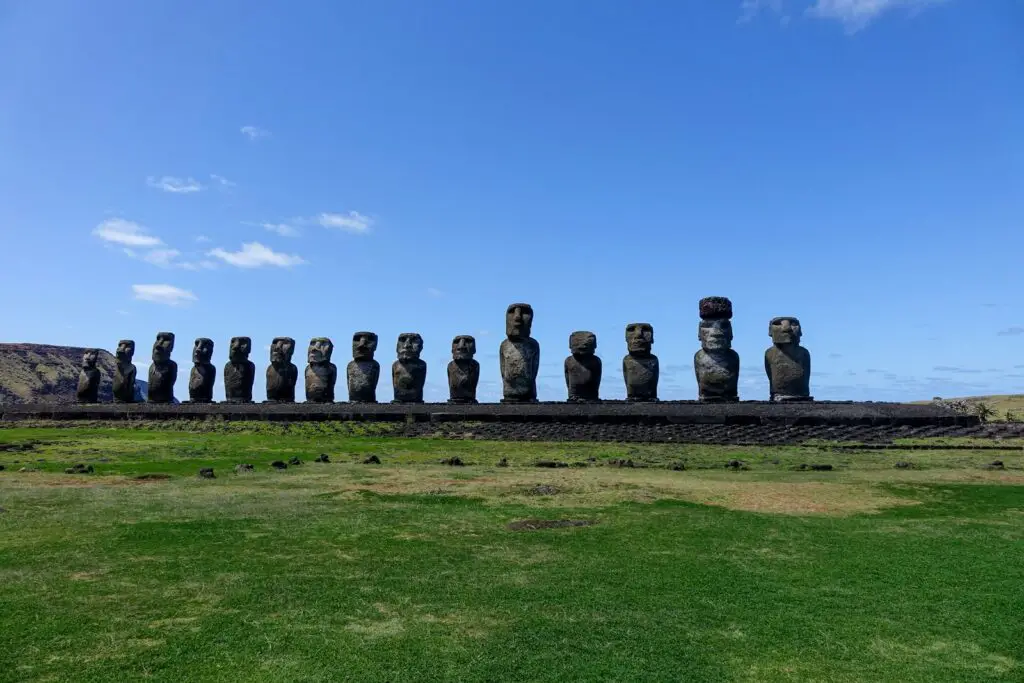
The Lost City of Teyuna – Colombia
The Lost City, or Ciudad Perdida, is an ancient settlement that predates Machu Picchu by approximately 650 years. Located within the Sierra Nevada de Santa Marta, it involves a challenging trek. Highlights of this site are:
- Stone terraces: Built for agricultural purposes.
- Circular plazas: Central areas used for ceremonies and social gatherings.
- Impressive stairways: Leading to elevated structures.
Tiwanaku – Bolivia
Tiwanaku, located near Lake Titicaca, is an archaeological treasure known for its advanced architectural and agricultural techniques. This site, flourishing between 300 and 1000 AD, includes:
- The Akapana Pyramid: A stepped pyramid believed to have religious significance.
- The Gateway of the Sun: A monolithic stone archway adorned with intricate carvings.
- The Kalasasaya Temple: A large open structure with standing stone pillars.
Chavín de Huantar – Peru
Chavín de Huantar served as a major religious center for the Chavín culture around 900 BC. Nestled in the Andean highlands, it features:
- The Lanzón Stela: A monolithic sculpture presumed to represent a deity.
- U-shaped plazas: Architectural designs meant for ceremonies.
- Subterranean galleries: Intricate labyrinthine tunnels still open for exploration.
By visiting these historic landmarks and ancient ruins, travelers gain an invaluable understanding of South America’s complex and diverse heritage.
Indigenous Communities and Their Traditions
South America offers a rich tapestry of indigenous cultures, each uniquely contributing to the continent’s heritage.
Andean Cultures
In the highlands of Peru and Bolivia, one finds the Quechua and Aymara people. Distinguished by their intricate textiles and vibrant festivals, these communities have preserved many aspects of pre-Columbian life. Notable highlights include:
- Textile Weaving: The Quechua are renowned for their artisanal skills, producing handwoven textiles that tell stories through patterns.
- Inti Raymi Festival: Celebrated in Cusco, this festival honors Inti, the sun god, with parades, dances, and traditional attire.
- Markets in Pisac and La Paz: These markets offer a portal to traditional crafts and local produce, providing a vibrant shopping experience.
Amazonian Tribes
Deep within the Amazon rainforest, various tribes like the Yanomami and Ashaninka maintain a profound connection with nature. Their ways of life offer invaluable insights into sustainable living and biodiversity:
- Shamanic Practices: Central to many tribes, shamanic rituals are used for healing and spiritual guidance.
- Traditional Hunting and Gathering: Techniques that underscore the importance of symbiosis with the rainforest ecosystem.
- Handicrafts: Products like woven baskets and pottery, reflecting the natural resources and artistic traditions of the tribes.
Guarani and Mapuche Communities
In Paraguay, Brazil, and Argentina, the Guarani people have a rich oral tradition and a deep spiritual worldview. The Mapuche of Southern Chile and Argentina have preserved their language, martial traditions, and spiritual rituals:
- Guarani Myths and Legends: Oral stories that convey the cosmology of the Guarani people.
- Mapuche Handicrafts: Stone and silver jewelry, textiles, and wooden carvings that offer a glimpse into their material culture.
- Mapuche Machitún: A healing ceremony led by a machi, or shaman, involving chants and natural medicine.
Integration and Preservation
Efforts to integrate modern amenities while preserving traditions are evident in community-led tours and eco-lodges. These initiatives provide immersive experiences without compromising cultural integrity:
- Homestays: Lodging with indigenous families, offering firsthand cultural exchanges.
- Eco-friendly Tours: Guided visits to sacred sites, emphasizing the importance of conservation and respect for cultural practices.
Understanding these communities offers a profound connection to South America’s cultural roots.
Colonial History and Influences
South America’s colonial past has left a lasting imprint on its cultural landscape, evident in its architecture, language, religion, and traditions. Several destinations offer profound insights into the colonial influence on the continent’s culture.
Buenos Aires, Argentina
Often referred to as the “Paris of South America,” Buenos Aires boasts impressive colonial architecture and European-styled boulevards. Key attractions include:
- Plaza de Mayo: The historical heart of Buenos Aires, surrounded by significant colonial buildings such as the Cabildo and the Casa Rosada.
- San Telmo: One of the oldest neighborhoods filled with colonial houses, cobblestone streets, and antique shops.
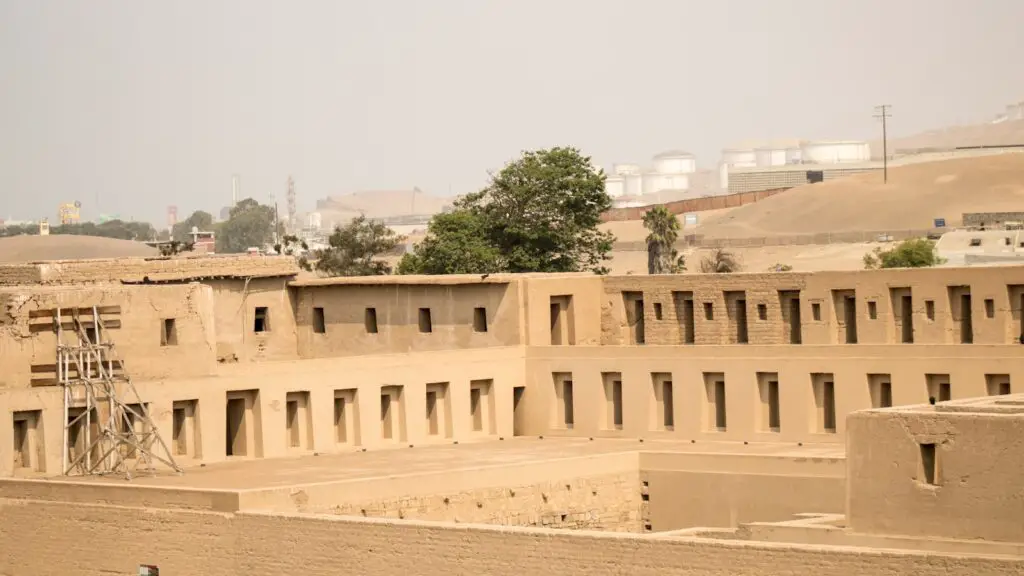
Lima, Peru
Lima, the capital of Peru, serves as a central hub of colonial history. The city features numerous museums, churches, and plazas that reflect its rich heritage. Notable sites include:
- Historic Centre of Lima: Home to grand colonial-era buildings, including the Government Palace and the Cathedral of Lima.
- Church of San Francisco: Renowned for its catacombs and well-preserved colonial art and architecture.
Cartagena, Colombia
Cartagena’s walled city stands as a testament to its colonial past, with brightly colored buildings and stunning forts. Key points of interest include:
- Castillo San Felipe de Barajas: An impressive fortress designed to protect the city from pirates.
- Old Town Cartagena: A maze of cobblestone streets, colonial churches, and vibrant plazas.
Quito, Ecuador
Recognized as one of the best-preserved colonial cities in South America, Quito offers:
- Old Town Quito: A UNESCO World Heritage site filled with Baroque churches, plazas, and colonial mansions.
- La Compañia de Jesús: One of the most beautiful churches in Latin America, adorned with elaborate gold leaf decorations.
Sucre, Bolivia
Sucre is known for its well-maintained colonial architecture and serene ambiance. Key attractions include:
- Casa de la Libertad: The site where Bolivia’s declaration of independence was signed.
- Metropolitan Cathedral: An enduring example of Sucre’s colonial architecture.
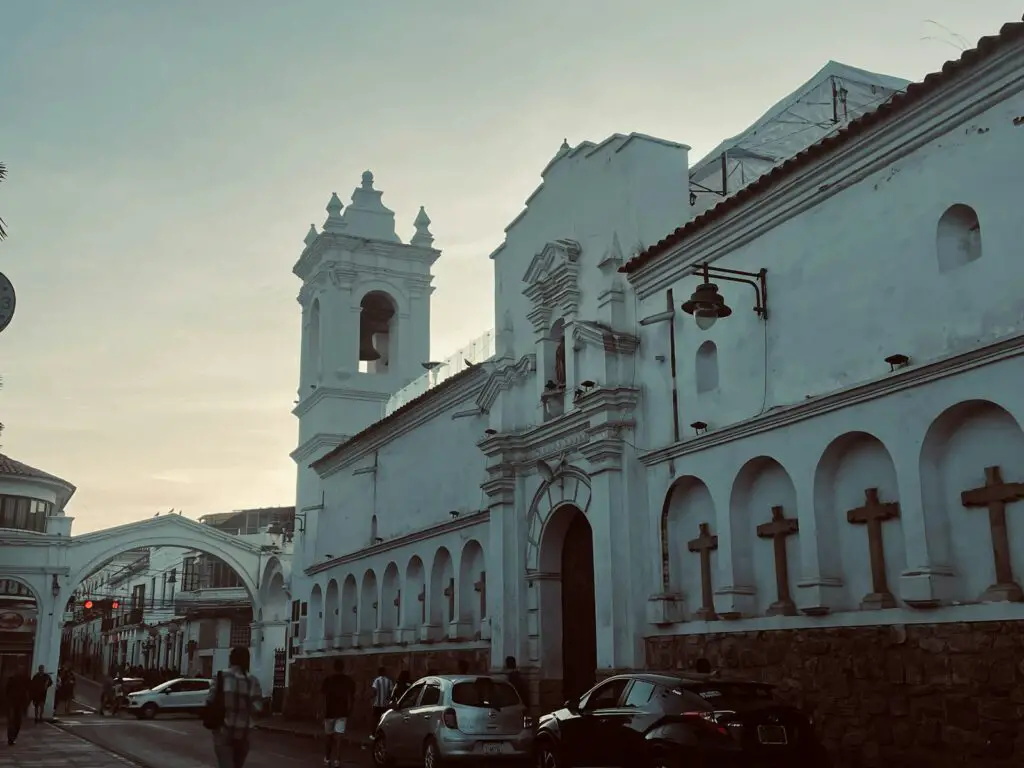
Salvador, Brazil
Salvador offers a unique blend of colonial and Afro-Brazilian culture, particularly evident in its music, dance, and cuisine. Highlights include:
- Pelourinho: The historic heart of Salvador, filled with colorful colonial buildings and cobblestone streets.
- São Francisco Church: Famous for its ornate gold leaf-adorned interior.
Exploring these cities provides deeper insight into how colonial history has shaped modern South American cultures, offering a unique perspective on the continent’s diverse heritage.
Gastronomy and Culinary Adventures
Experiencing South America’s food culture offers a journey through diverse flavors, cooking techniques, and unique ingredients. This region is rich in culinary traditions that reflect its complex history and geographic diversity.
Argentina
- Asado: The Argentine barbecue is a social event centered around whole cuts of beef, pork, chicken, and other meats, slow-cooked over an open flame.
- Empanadas: These pastry pockets filled with meats, cheese, or sweet fillings are a staple and vary by region.
- Malbec Wine: Recognized globally, Malbec from the Mendoza region is prized for its deep color and rich flavor.
Peru
- Ceviche: A seafood dish where raw fish is marinated in freshly squeezed lime or lemon juice, spiced with ají, and garnished with onions and cilantro.
- Lomo Saltado: Stir-fried beef mixed with tomatoes, onions, and French fries, often served with rice, blending Chinese stir-frying techniques with local ingredients.
- Pisco Sour: This iconic Peruvian cocktail mixes Pisco brandy, lime juice, syrup, egg white, and bitters.
Brazil
- Feijoada: A black bean stew with pork, typically served with rice, collard greens, and orange slices, reflecting Brazil’s Portuguese heritage.
- Brigadeiro: A popular sweet, these chocolate truffles are made from condensed milk, cocoa powder, butter, and covered in chocolate sprinkles.
- Caipirinha: Brazil’s national cocktail features cachaça (a distilled spirit made from sugarcane), lime, sugar, and ice.
Chile
- Pastel de Choclo: Corn pie with a base of ground corn mixed with meat, onions, olives, and hard-boiled eggs, often baked to a golden crust.
- Sopaipillas: Fried dough typically served with pebre (a Chilean salsa) or sweet chancaca sauce.
- Carmenère Wine: Rediscovered in the 1990s, Chile’s signature red wine grape is renowned for its robust flavors and smooth finish.
Colombia
- Arepas: Cornmeal cakes that can be grilled, fried, or baked, filled with cheese, meats, or avocado.
- Ajiaco: A hearty soup made with chicken, three kinds of potatoes, and a local herb called guasca, often accompanied by rice, avocado, and capers.
- Coffee: Colombian coffee is celebrated worldwide for its smooth, rich taste, grown in the ideal conditions of the coffee triangle.
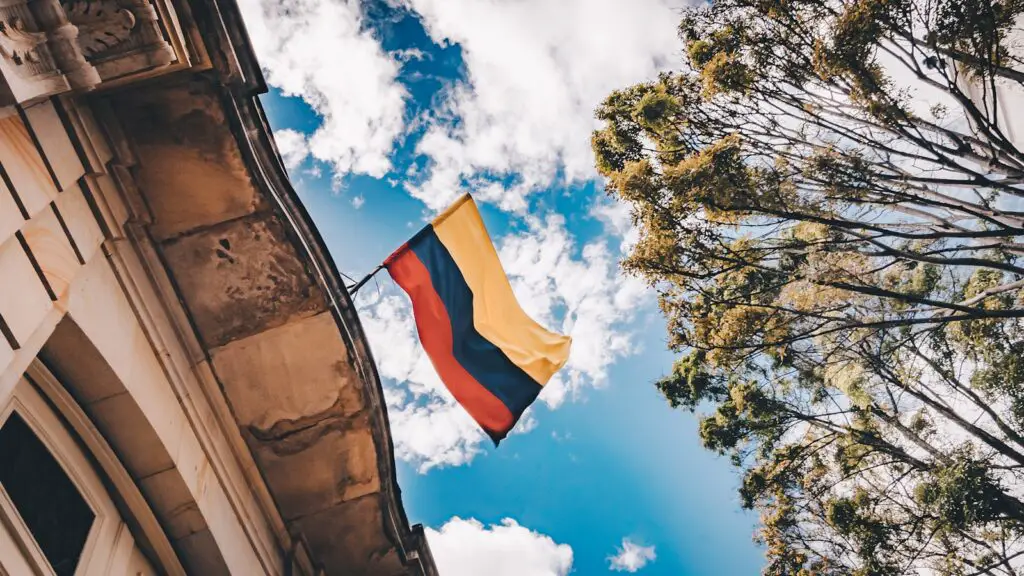
Bolivia
- Salteñas: Baked savory pastries filled with meat, mixed vegetables, and slightly sweet or spicy gelatinous broth.
- Pique a lo Macho: A hearty dish with diced beef, sausage, onions, tomatoes, and fried potatoes, often topped with a fried egg.
- Singani: Bolivia’s national spirit made from distilled Muscat of Alexandria grapes, used in cocktails like the Chuflay.
South America offers gastronomic experiences that create lasting memories, showcasing the historical and cultural narratives of each country through its food and drink.
Festivals and Celebrations
South America offers a myriad of festivals and celebrations, each showcasing the unique cultural diversity and heritage found within this vibrant continent.
Carnival
Carnival is one of the most famous festivals, celebrated with unparalleled fervor in countries like Brazil with its renowned Rio Carnival. This pre-Lenten festival features:
- Samba Parades: Elaborate processions with dancers donning exquisite costumes.
- Music and Dance: Samba, jazz, and other forms play a central role.
- Street Parties: Cities engulfed with spontaneous street celebrations.
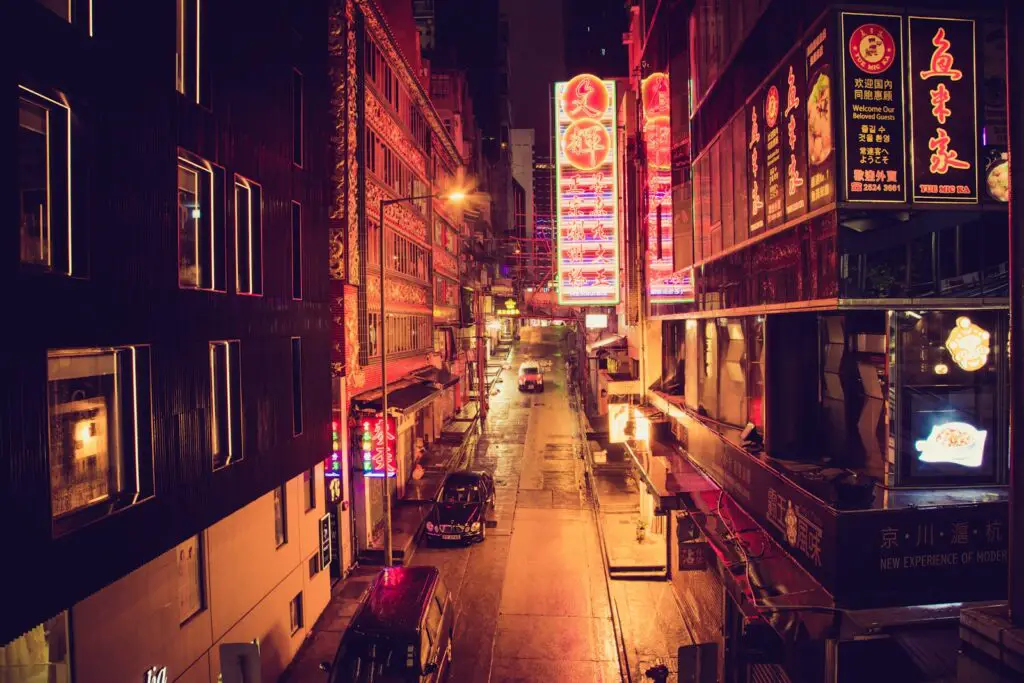
Inti Raymi
Held in Peru, Inti Raymi, or the Festival of the Sun, honors the Incan sun god, Inti. This celebration, deeply rooted in history, includes:
- Reenactments: Participants re-enact ancient Inca rituals.
- Colorful Attire: Traditional costumes that reflect Incan culture.
- Offering Ceremonies: Gifts are presented to Inti to ensure a good harvest.
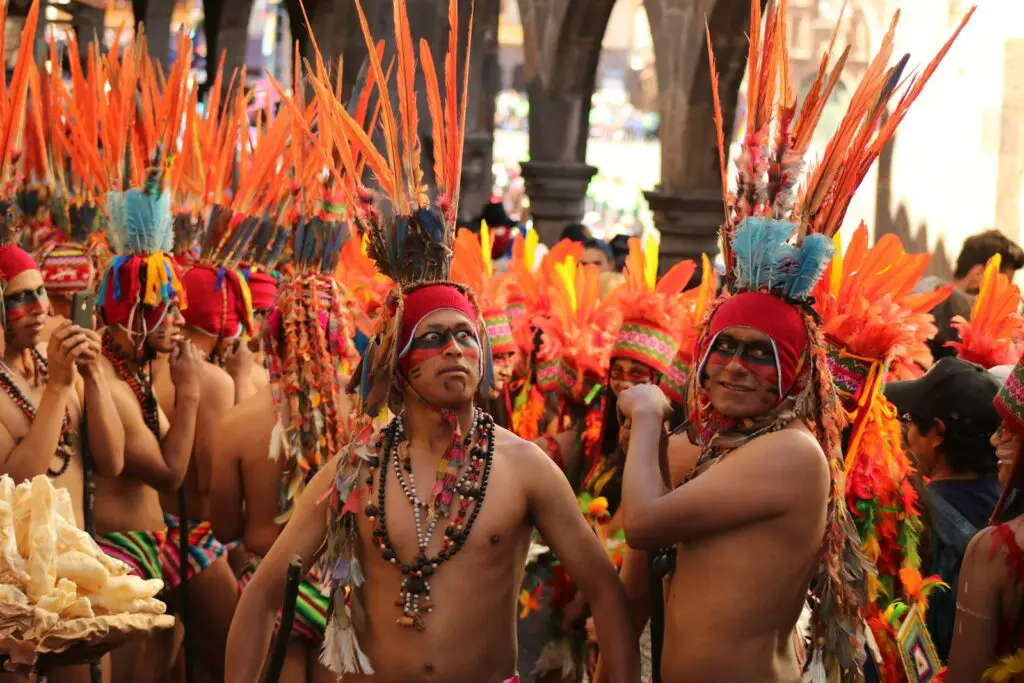
Dia de los Muertos
Countries like Mexico observe Dia de los Muertos, or Day of the Dead, a time to remember deceased loved ones. Key elements encompass:
- Altar Decorations: Altars adorned with marigolds, candles, and photographs.
- Skeleton Imagery: Calaveras (skulls) and catrinas.
- Family Gatherings: Families come together to honor the deceased.
Fiesta de la Vendimia
Chile celebrates the Fiesta de la Vendimia, a grape harvest festival, particularly in the wine regions. Major features include:
- Wine Tasting: Extensive arrays of local wines are available for tasting.
- Grape Stomping Competitions: Traditional grape crushing events.
- Parades: Colorful parades highlighting wine culture.
Pachamama Raymi
An Andean festival, Pachamama Raymi, pays tribute to Mother Earth, Pachamama. Celebrated predominantly in Bolivia and parts of Peru, it features:
- Offerings: Rituals involving food, drink, and ceremonial items are presented to the earth.
- Traditional Music: Indigenous music playing an integral role.
- Community Feasts: Communal meals to honor Pachamama.
Semana Santa
Holy Week, or Semana Santa, is observed across South America but is notably significant in countries like Colombia and Ecuador. This religious observance includes:
- Processions: Parades re-enacting the Passion of Christ.
- Religious Symbols: Crosses, statues, and other religious artifacts.
- Services: Daily church services reflecting on Christ’s journey.
These festivals illustrate the rich and diverse cultural landscape of South America, offering vibrant experiences for visitors to delve into the continent’s heritage.
Art, Music, and Dance Traditions
South America boasts a rich tapestry of artistic, musical, and dance traditions that reflect the continent’s diverse cultures and histories. Visitors on cultural tours have the opportunity to immerse themselves in these dynamic forms of expression.
Art
- Indigenous Art: Travelers can explore ancient artifacts and contemporary works influenced by indigenous communities, such as the intricate weavings of the Andean cultures and the pottery of the Amazonian tribes.
- Colonial Art: Many cities feature museums and galleries showcasing colonial-era art, where Spanish and Portuguese influences merge with local styles.
- Street Art: Urban areas, particularly in cities like Bogotá and São Paulo, are renowned for vibrant street art scenes, offering guided tours that delve into the stories behind the murals.
Music
- Andean Music: Experience the haunting melodies of the Andes, characterized by instruments like the pan flute and charango. Workshops and performances often feature traditional ensembles.
- Samba and Bossa Nova: In Brazil, visitors can participate in samba schools and enjoy live Bossa Nova performances in Rio de Janeiro’s famous clubs, capturing the essence of Brazilian rhythm.
- Tango: Buenos Aires is the heart of tango music, where couples can take dance lessons and attend passionate performances in historic tango houses.
Dance
- Capoeira: In Brazil, capoeira, a blend of martial arts, dance, and music, can be explored through demonstrations and participatory classes.
- Cueca: In Chile, the traditional cueca dance, a courtship ritual, offers insight into national identity and historical influences. Demonstrations and community dances are frequent.
- Salsa: Colombia’s Cali is known as the “World Capital of Salsa.” Visitors can take salsa lessons and attend festivals dedicated to this energetic dance form.
These vibrant traditions are not just spectacles but active cultural practices. Engaging with them allows travelers to gain a deeper understanding of South America’s diverse heritage and contemporary life.
Nature and Cultural Landscapes
South America offers a unique blend of nature and cultural landscapes, providing travelers with diverse experiences that span pristine rainforests, majestic mountains, ancient ruins, and vibrant cities. This section explores the top destinations for those eager to immerse themselves in the continent’s rich heritage.
Machu Picchu, Peru
Machu Picchu stands as a symbol of Incan ingenuity and mystery. Perched high in the Andes Mountains, this UNESCO World Heritage site is renowned for its breathtaking scenery and historical significance. Visitors can:
- Explore the ancient stone structures.
- Hike the famous Inca Trail.
- Absorb the panoramic views of the surrounding valleys and peaks.
Patagonia, Argentina, and Chile
The vast, rugged expanse of Patagonia spans both Argentina and Chile, offering unparalleled natural beauty and adventure. This region is ideal for nature enthusiasts who seek to experience:
- The towering peaks of Torres del Paine National Park.
- The expansive Perito Moreno Glacier.
- The biodiverse ecosystems within Patagonia’s protected areas.
Amazon Rainforest, Brazil
The Amazon Rainforest, often referred to as the “lungs of the Earth,” extends over several South American countries, with Brazil housing the largest portion. Visitors to this lush and vibrant ecosystem can:
- Participate in guided jungle treks.
- Observe exotic wildlife in their natural habitats.
- Learn about the indigenous communities and their traditional practices.
Salar de Uyuni, Bolivia
Salar de Uyuni is the world’s largest salt flat and an otherworldly destination. Its strikingly reflective surface during the wet season and stunning salt formations during the dry season offer visitors opportunities to:
- Capture surreal photographs.
- Visit the Incahuasi Island, home to giant cacti.
- Experience the ethereal beauty of a stark, yet mesmerizing landscape.
Cartagena, Colombia
Cartagena is a city that captures the essence of Colombia’s Caribbean charm and colonial history. This coastal destination boasts:
- The historically rich Walled City.
- Vibrant local culture and colorful architecture.
- Beautiful beaches with crystal-clear waters.
Rio de Janeiro, Brazil
Rio de Janeiro blends spectacular natural settings with a rich cultural heritage. Known worldwide for its Carnival festival, this city offers:
- The iconic statue of Christ the Redeemer.
- Stunning beaches like Copacabana and Ipanema.
- Lively samba music and dance traditions.
Lake Titicaca, Peru, and Bolivia
Lake Titicaca, straddling the border between Peru and Bolivia, is the highest navigable lake in the world. This sacred water body is important in Andean culture. Visitors can:
- Explore the indigenous Uros Floating Islands.
- Visit the Isla del Sol, believed to be the birthplace of the Sun God.
- Engage with local customs and traditions.
Galápagos Islands, Ecuador
The Galápagos Islands are a volcanic archipelago famed for their unique biodiversity and role in Charles Darwin’s theory of evolution. Visitors to this natural laboratory can:
- Snorkel and dive among diverse marine life.
- Observe unique species like giant tortoises and marine iguanas.
- Explore the islands through guided eco-tours.
Cultural Experiences in Major Cities
Buenos Aires, Argentina
In Buenos Aires, visitors can immerse themselves in Tango, Argentina’s most famous dance. For a truly authentic experience, La Boca, San Telmo, and Palermo neighborhoods host numerous milongas (Tango dance halls) and captivating street performances. Another must-visit site is the Teatro Colón, renowned for its exquisite architecture and world-class opera and ballet performances.
Rio de Janeiro, Brazil
Rio de Janeiro offers a vibrant cultural atmosphere with its annual Carnaval. The festival involves impressive parades, colorful costumes, and samba music filled with energy. Additionally, the city’s historic downtown and the district of Santa Teresa provide art galleries, museums, and colonial architecture that highlight Brazil’s rich heritage.
Lima, Peru
Lima captivates visitors with its rich pre-Columbian history. The Museo Larco showcases ancient artifacts, while the Huaca Pucllana offers guided tours of a pre-Incan pyramid located right in the heart of the city. Lima’s historic center, a UNESCO World Heritage site, features beautiful colonial buildings and the famous Plaza Mayor.
Bogotá, Colombia
In Bogotá, the Museo del Oro (Gold Museum) stands out, displaying an extensive collection of pre-Colombian gold artifacts. The picturesque neighborhood of La Candelaria provides a walk through vibrant street art, historical landmarks, and artisanal markets.
Quito, Ecuador
Quito’s old town, a UNESCO World Heritage site, is home to enchanting colonial architecture, including the stunning Church of the Society of Jesus (La Iglesia de la Compañía de Jesús) with its intricate gold leaf interior. Visitors can explore the vibrant markets, traditional craft shops, and impressive cathedrals.
Santiago, Chile
Santiago seamlessly blends modernity with tradition. The Barrio Lastarria and Bellavista neighborhoods offer an array of museums, theaters, and cultural centers. Notable sites include the Museo Chileno de Arte Precolombino and the Central Market, which offers a taste of Chilean culinary delights within a historic setting.
Caracas, Venezuela
Caracas is rich in cultural heritage, exemplified by the National Pantheon, where Simón Bolívar’s remains rest. The Museum of Fine Arts provides insights into both modern and colonial art. The El Hatillo neighborhood is rich in traditional music, handicrafts, and cuisine.
Eco-Cultural Tourism Opportunities
Eco-cultural tourism in South America offers travelers the chance to delve into the rich tapestry of the continent’s natural and cultural heritage. This type of tourism integrates the appreciation of cultural traditions with the preservation of natural landscapes, providing a symbiotic experience that nurtures both nature and community.
Key Destinations and Activities
- Amazon Rainforest: The heart of eco-cultural tourism in South America, the Amazon Rainforest, offers guided tours that focus on indigenous tribes and their sustainable way of life. These tours highlight the profound connection between the native people and their environment.
- Galápagos Islands: This iconic destination allows visitors to explore unique ecosystems while learning about the conservation efforts that preserve this fragile landscape. The tours often include interactions with local communities, emphasizing the cultural aspects of island life.
- Andes Mountains: Trekking through the Andes provides an opportunity to visit traditional villages and engage with the local customs of Andean cultures. Excursions often include homestays where travelers can experience daily life and traditional agricultural practices.
Benefits of Eco-Cultural Tourism
Eco-cultural tourism brings multifaceted benefits:
- Cultural Preservation: It supports the conservation of cultural heritage by spotlighting and valuing local traditions and customs.
- Environmental Protection: Encourages sustainable practices that protect natural resources, maintaining biodiversity and eco-systems.
- Economic Advantages: Provides income for local communities through tourism, promoting self-sufficiency and economic growth.
Responsible Travel Tips
To ensure eco-cultural tourism remains sustainable and beneficial:
- Respect Local Traditions: Travelers should immerse themselves with a respectful understanding of cultural norms and practices.
- Support Local Economies: Prioritizing locally-owned accommodations, restaurants, and guides ensures that the economic benefits stay within the community.
- Minimize Environmental Impact: Choosing eco-friendly travel options, reducing waste, and participating in conservation activities helps protect fragile ecosystems.
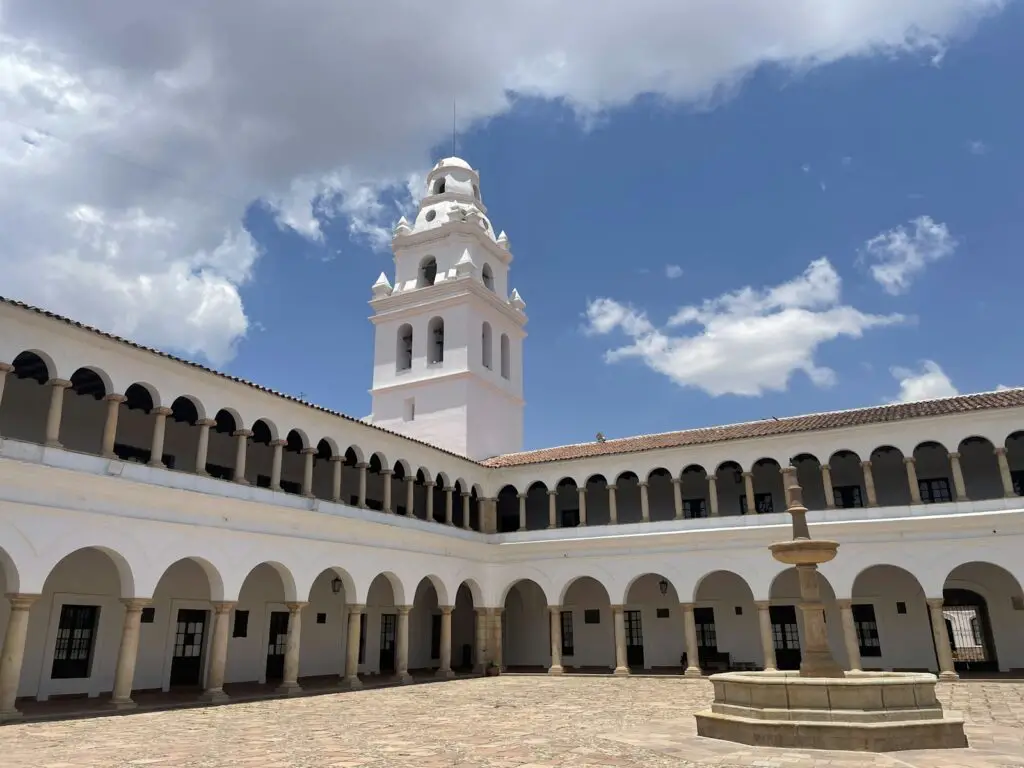
By embracing eco-cultural tourism, travelers can foster greater appreciation and preservation of South America’s diverse cultural and natural heritage.
Practical Tips for Cultural Tourists
Understanding the customs and traditions of South American cultures will enhance the travel experience. Here are some practical tips for navigating cultural tours:
- Research in Advance: Before embarking on a cultural tour, travelers should educate themselves on the history, traditions, and languages of the regions they plan to visit. Understanding cultural nuances can enhance interactions and deepen appreciation.
- Respect Local Customs: It is vital to respect local customs and practices. Behaviors acceptable in one’s home country may be inappropriate in South America. For example, in many South American cultures, punctuality is not as rigidly observed as in North America or Europe.
- Learn Basic Phrases: Knowing basic phrases in Spanish or Portuguese can go a long way. Simple greetings and expressions of gratitude show respect and make communication smoother.
- Dress Appropriately: Clothing choices can significantly influence interactions. Modest attire is often appreciated, especially in religious or rural areas. Consider packing clothes that abide by the dress norms of the destination.
- Be Mindful of Photography: Always ask for permission before photographing people, particularly in indigenous communities. Some cultures consider photography intrusive or disrespectful.
- Try Local Cuisine: Engaging with local food traditions is a key part of cultural tourism. Be adventurous but mindful of dietary restrictions and hygiene standards.
- Use Local Guides: Hiring local guides offers a deeper understanding of cultural contexts. They can provide invaluable insights and ensure that the travelers navigate with respect and knowledge.
- Respect Sacred Sites: Sacred sites and ceremonies should be approached with solemnity and reverence. Following guidelines provided at these sites is crucial.
- Mind the Environment: Protecting natural heritage is part of respecting cultural heritage. Tourists should follow eco-friendly practices, minimizing their environmental footprint.
- Participate in Cultural Activities: Engage in local festivals, music performances, and art exhibitions. These activities offer immersive experiences and a genuine taste of local culture.
“Travel makes one modest. You see what a tiny place you occupy in the world.” ― Gustave Flaubert
- Stay Open-Minded: Openness to new experiences and perspectives enriches travel. Embracing cultural differences with curiosity and respect leads to more memorable and meaningful experiences.
Practicing these tips can contribute to more respectful and engaging cultural tourism, ensuring that travelers leave a positive impact on the communities they visit.
Sustainable and Responsible Tourism Practices
In the realm of cultural tours, sustainability and responsibility stand as paramount principles. South America, with its rich heritage and delicate ecosystems, demands conscientious tourism practices. Responsible tourism not only preserves cultural integrity but also fosters environmental conservation.
Visitors can adopt numerous practices that contribute to sustainable tourism. These practices are crucial for maintaining the authenticity and viability of cultural experiences.
Support Local Communities
- Buying Local Products: Engage with local artisans by purchasing handicrafts and souvenirs directly from them. This supports the local economy and ensures that traditions endure.
- Participating in Community-Based Tours: Opt for tours operated by local organizations. This provides authentic experiences while economically benefiting local communities.
Minimize Environmental Impact
- Reduce Waste: Avoid single-use plastics and dispose of waste responsibly. Carry reusable water bottles and bags.
- Respect Wildlife and Nature: Admire wildlife from a distance and adhere to guidelines for interacting with natural habitats. Do not disrupt natural behaviors.
Cultural Sensitivity
- Adhere to Dress Codes: Respect local customs and dress appropriately, especially in religious or sacred sites.
- Learn Basic Language Phrases: Efforts to speak in the local language can build rapport and demonstrate respect.
Ethical Tourism Companies
- Research Tour Operators: Choose companies known for responsible practices. Look for certifications or alliances with sustainable tourism organizations.
- Transparent Practices: Prefer businesses that maintain transparency about their efforts in sustainability and their impact on local communities.
Carbon Footprint Reduction
- Eco-Friendly Transportation: Use sustainable modes of transport such as cycling, walking, or eco-friendly buses. Where feasible, offset carbon emissions by investing in environmental projects.
- Energy Conservation: Stay in accommodations that prioritize energy-efficient practices. Support hotels and lodges committed to reducing their ecological footprint.
Commitment to these sustainable and responsible tourism practices enriches the cultural tour experience in South America. This approach not only protects and honors South America’s cultural and natural heritage but also ensures that it thrives for future generations to enjoy and learn from.
Conclusion: Embracing South America’s Cultural Richness
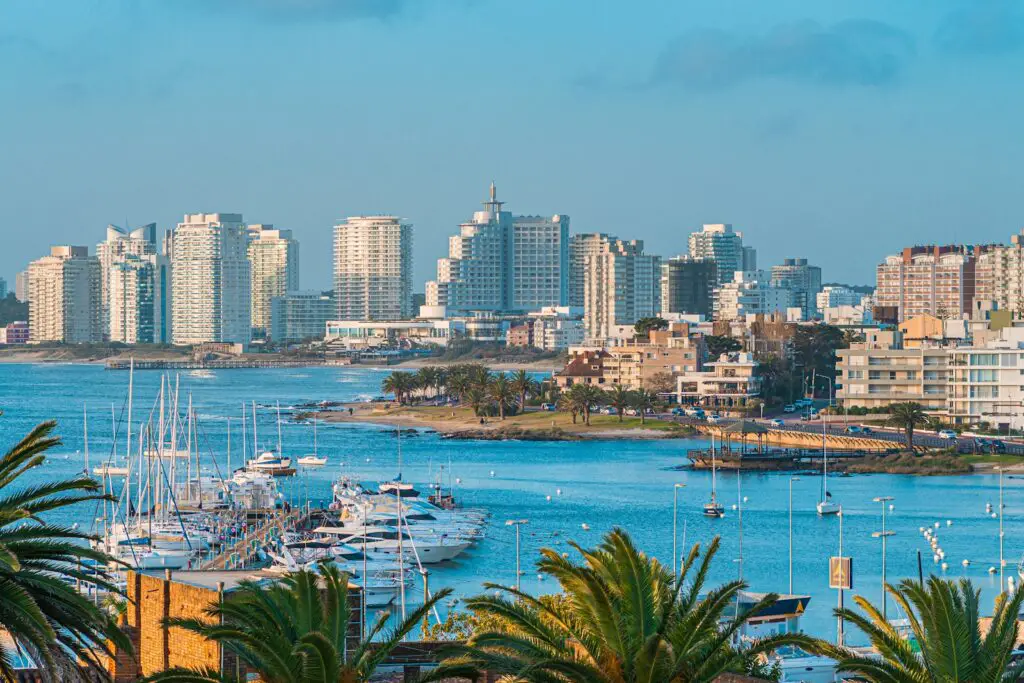
South America offers a vast tapestry of cultural experiences that reflect its rich heritage. From ancient civilizations to vibrant modern traditions, travelers have the opportunity to immerse themselves in the unique cultures of the continent. By participating in cultural tours, one can engage with:
- Historical Landmarks: Sites like Machu Picchu, the Nazca Lines, and the archaeological ruins of Tikal offer profound insights into the ancient civilizations that shaped South America. These locations provide historical context and a deeper understanding of the continent’s past.
- Traditional Festivals: Festivals such as Brazil’s Carnival, Peru’s Inti Raymi, and Bolivia’s Oruro Carnival showcase the continent’s lively spirit through music, dance, and elaborate costumes. These events celebrate the diverse traditions and communal values that have been passed down through generations.
- Local Art and Craftsmanship: Visiting local markets and artisans in regions like Cusco, Quito, and Buenos Aires reveals the intricate work and longstanding techniques of South American craftspeople. Items ranging from textiles and pottery to jewelry and murals highlight the artistic legacy that thrives in these communities.
- Gastronomy Tours: Culinary explorations allow travelers to savor the authentic flavors of South America. Countries such as Argentina, Colombia, and Chile offer tours that include tastings of local delicacies, cooking classes, and visits to traditional markets. These tours provide a delicious gateway to understanding regional identities and the cultural significance of native ingredients.
- Music and Dance: Engaging with the unique rhythms of South America, whether through tango lessons in Buenos Aires, samba sessions in Rio de Janeiro, or Andean folk music performances, allows an appreciation for the continent’s musical diversity. These experiences emphasize the integral role of music and dance in cultural expression and community bonding.
- Indigenous Communities: Tours that involve visiting indigenous communities, such as the Quechua in the Andes or the Guarani in the Amazon, offer an authentic glimpse into their way of life, languages, and traditions. These interactions foster a greater respect for and understanding of their contributions to South American culture.
By embracing these cultural dimensions through organized tours and personal encounters, travelers gain a profound appreciation for the heritage that defines South America. Such immersive experiences not only enrich one’s knowledge but also validate the diverse cultural expressions that continue to thrive across the continent.

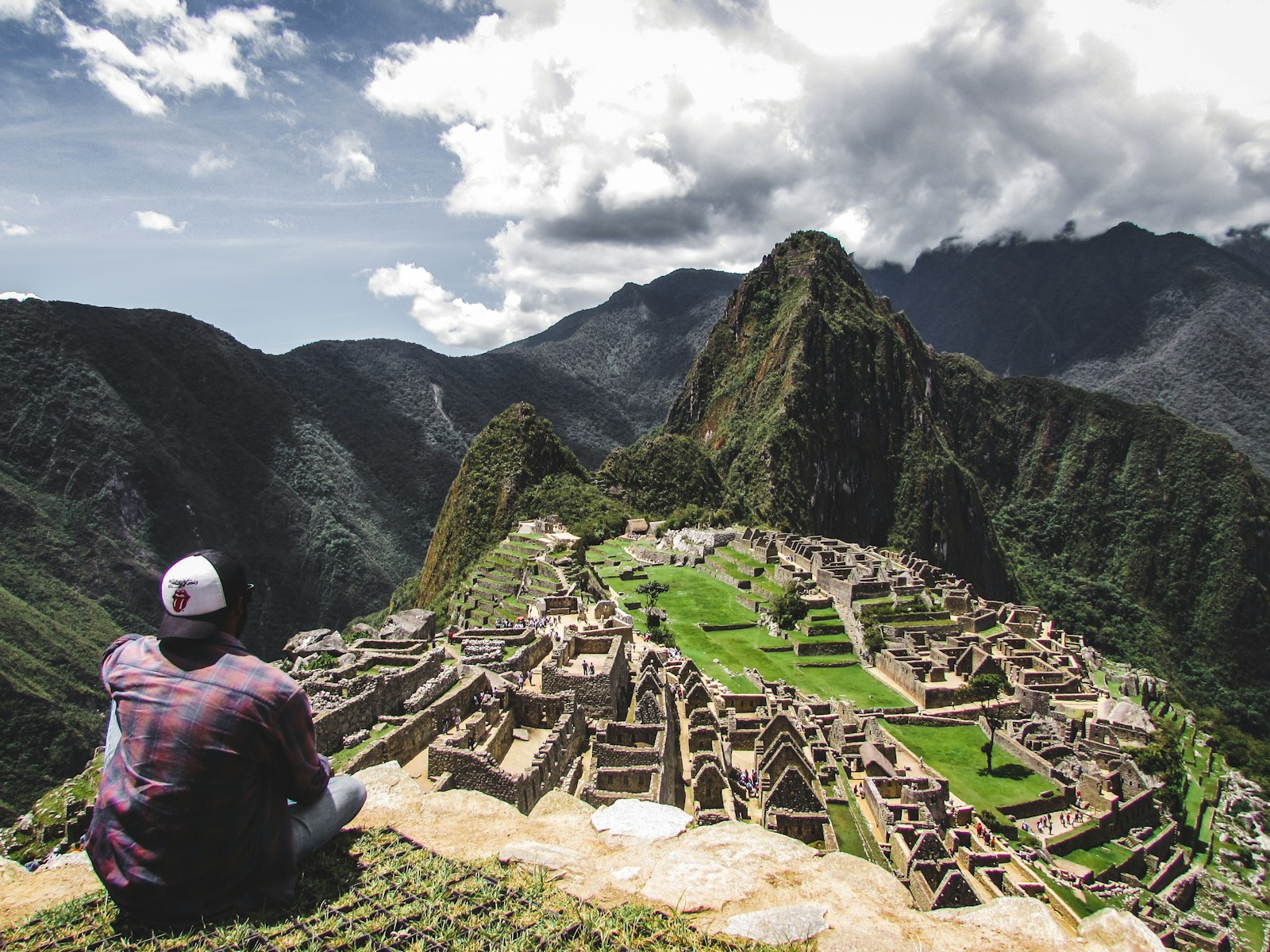
Leave a Reply